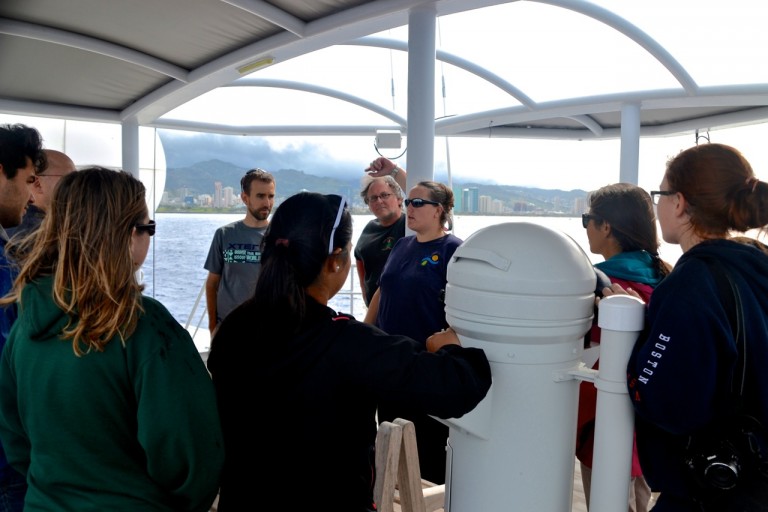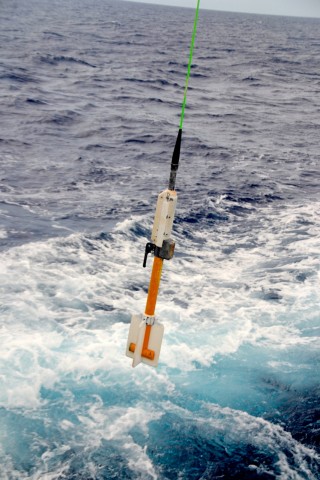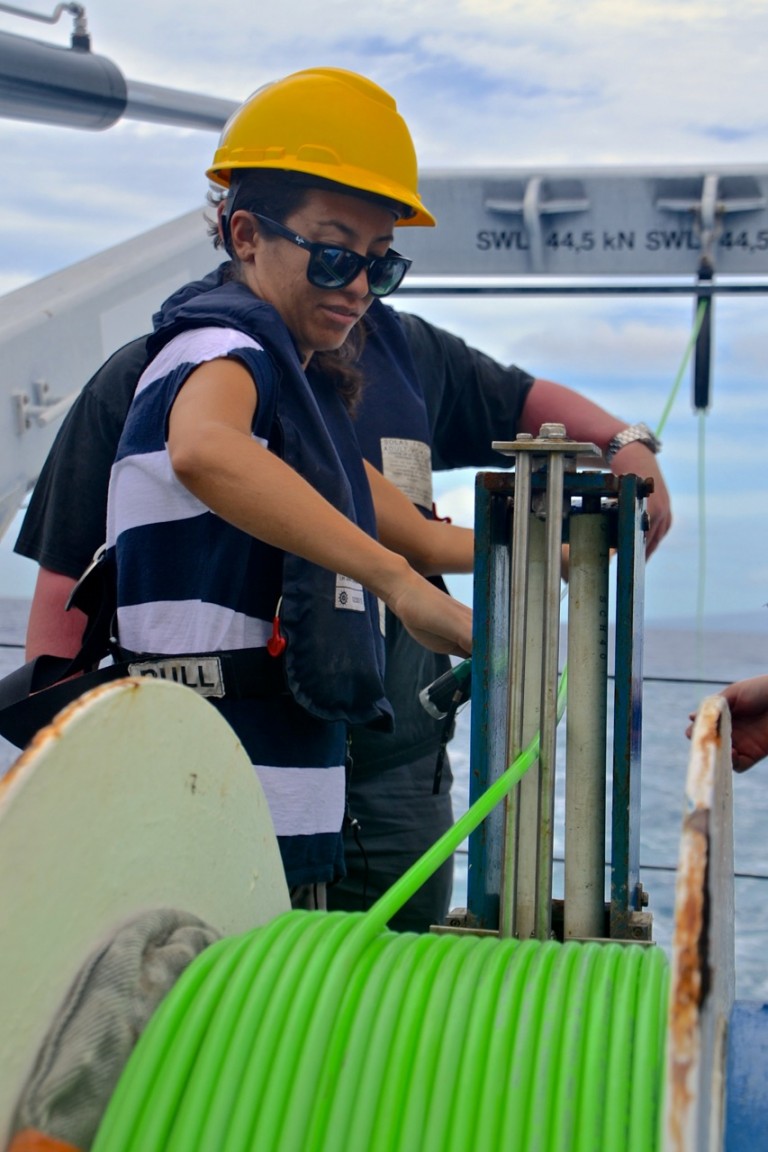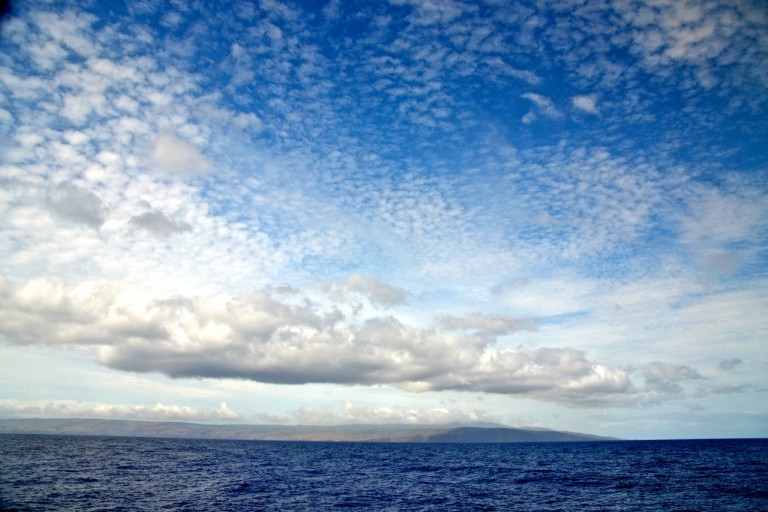On Friday, the first leg of the student cruise departed Honolulu. For many, this is their first research cruise, or even their first time on a boat, much less a ship—ever. Pulling out of Honolulu brought everyone up to the observation deck to watch the Falkor leave, and then it was time to get to work.


Most of us had been on the ship since Thursday, when we returned to Falkor to complete our cruise training. While Wednesday’s focus was on the scientific equipment on board, on Thursday we went through our safety training. We learned the alarms and participated in an emergency evacuation drill, as well as learning the protocols for being on deck during ship operations.
So we were ready and anxious to begin once Falkor cleared the harbor. Many of the students went down to the work deck to help deploy the magnetometer. Several yellow hard hats could be seen moving around the deck, one for each student trying to learn as much as possible. We are towing the magnetometer behind the ship to precisely measure small changes in magnetism in the Maui Nui region, readings that will help us understand the region’s geologic history.
Island Magnetism
There are two key things we will look for in the data. First, as rocks get older, the strength of their magnetism fades. Second, because Earth’s magnetism has shifted directions over the eons, the direction of a rock’s magnetism can give a clue as to when that rock first formed.
One of the things we’ll be looking for are fairly dense and narrow bands of solidified magma known as dikes. These can help scientists locate the centers of the volcanoes that make up Maui Nui because these magma lines would have radiated out from weak points below the ancient volcano centers.

Because the seafloor today is covered by sediments, corals, and other obstructions, we can’t see these dike features directly, but we can see them using this magnetic data – in conjunction with the other data we’re collecting. One key clue is that the magma dikes would be made of much younger rock than the surrounding rock the magma flowed through during past volcanic activity. So, over the dikes we should detect slightly stronger magnetism.
Shifts Through Reality
While some students were learning how to deploy and understand the magnetometer, others took up the first watch shift, learning how to keep track of the data coming into the control room. With backscatter data, magnetic data, and gravity data to keep track of, those on watch stay busy throughout each shift.
After a few hours, some of the students realized the reality of what being at sea feels like to those unaccustomed to being on the water. Though a few of the students were seasick, the watches and scientific work continued on thanks to those with their sea legs helping out by relieving those on watch that needed a break.

In the evening, one of the graduate students on board, Kendra Lynn, has been giving presentations. Her Hawaiian geology lecture series began on Thursday with an introduction and an overview of Molokai and Penguin Bank, which Falkor will be crossing on the way to the study area. On Friday, Kendra continued with an overview of Maui, and on Saturday the series ends with an introduction to Lanai. Students, professors, and crew, have been attending the talks, which are not only informative, but a fun way to interact with those on the ship while learning about Maui Nui.
